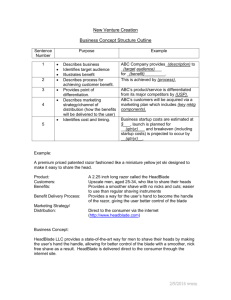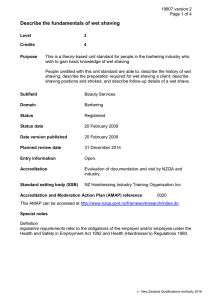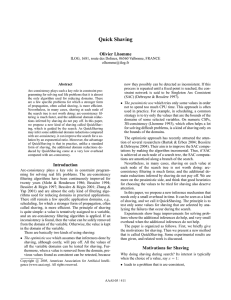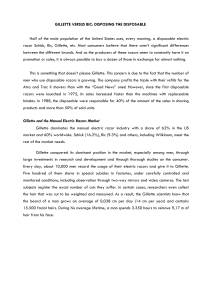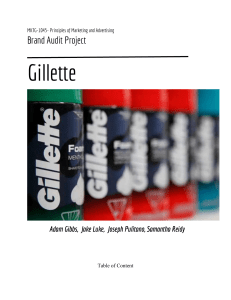marshall
advertisement
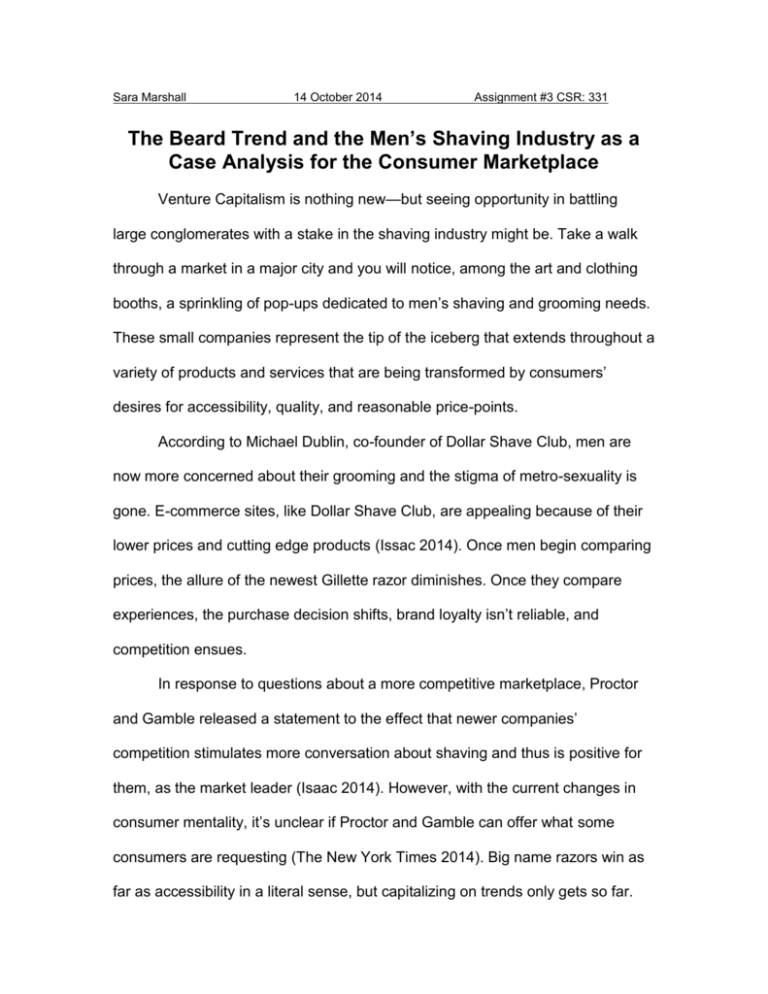
Sara Marshall 14 October 2014 Assignment #3 CSR: 331 The Beard Trend and the Men’s Shaving Industry as a Case Analysis for the Consumer Marketplace Venture Capitalism is nothing new—but seeing opportunity in battling large conglomerates with a stake in the shaving industry might be. Take a walk through a market in a major city and you will notice, among the art and clothing booths, a sprinkling of pop-ups dedicated to men’s shaving and grooming needs. These small companies represent the tip of the iceberg that extends throughout a variety of products and services that are being transformed by consumers’ desires for accessibility, quality, and reasonable price-points. According to Michael Dublin, co-founder of Dollar Shave Club, men are now more concerned about their grooming and the stigma of metro-sexuality is gone. E-commerce sites, like Dollar Shave Club, are appealing because of their lower prices and cutting edge products (Issac 2014). Once men begin comparing prices, the allure of the newest Gillette razor diminishes. Once they compare experiences, the purchase decision shifts, brand loyalty isn’t reliable, and competition ensues. In response to questions about a more competitive marketplace, Proctor and Gamble released a statement to the effect that newer companies’ competition stimulates more conversation about shaving and thus is positive for them, as the market leader (Isaac 2014). However, with the current changes in consumer mentality, it’s unclear if Proctor and Gamble can offer what some consumers are requesting (The New York Times 2014). Big name razors win as far as accessibility in a literal sense, but capitalizing on trends only gets so far. Consumers are tentatively spending more—but they’re demanding more too. It’s not enough to just have a razor. Emerging markets in menswear suggest that shaving is back to being a customizable style asset (Wang 2014). Companies like Gillette can’t focus on micro-trends because marketing a new product is an expensive endeavor. In fact, according to an article in the New York Times, Gillette recently set aside $200 million to market its new ProGlide razor with Flexball technology. Meanwhile smaller, heavily financed, companies like Dollar Shave Club walk away shipping 8.8% of the razor cartridges in the United States (Isaac 2014). This also translates into the shaving industry’s worst nightmare: the resurgence of the fashionable beard. From Duck Dynasty to Savil Row, it’s clear that beards are here to stay, at least for a while. So far, larger companies like Gillette are stuck spinning new marketing ploys to sell trimmers and shapers while hoping that beards disappear. In contrast, the same small startups that are nudging their way into the shaving industry are selling everything from beard oil to face lotion based on the amount of facial hair that customers sport. Companies like Harry’s (started by co-founder of Warby Parker, Jeffry Raider) even offer nofuss shaving supply delivery plans based on the kind of shaver that you are (Isaac 2014). While the future remains uncertain for the smaller start-ups battling for a limited market-share, it’s undeniable that the big companies are missing something. A brand alone is not enough to retain a customer in the current retail landscape. Whether a customer is clean-shaven or taking advantage of a trending beard, they want their grooming needs satisfied with minimal effort while capitalizing on the current style trends. Customers can stray if products aren’t superb quality for the price and don’t offer customizable experiences. For big retailers to survive, they need to spend time perfecting products that offer competitive advantages to smaller companies while creating a unique, seamless, and encompassing customer experience. Work Cited Associated Press. (2014, September 29). U.S. Spending Is Up 0.5% as Economy Stabilizes. The New York Times. Retrieved October 14, 2014 from <http://www.nytimes.com/2014/09/30/business/economy/economy-regains-momentum-as-usspending-rises-05-percent-.html?_r=0> Isaac, M. (2014, September 23). The New York Times: Where Profit Margins Are Hefty, Online Upstarts Muscle In. Retrieved October 14, 2014 from <http://www.nytimes.com/2014/09/24/technology/24shave.html> Moreno, K. (2014, September 15) Why Do Companies Undervalue Customer Loyalty? Forbes. Retrieved October 14, 2014 from <http://www.forbes.com/sites/forbesinsights/2014/09/15/why-do-companies-undervaluecustomer-loyalty/> Wang, L. (2014, June 17) No Sign of Slowing in the Global Menswear Market. BusinessOfFashion.com. Retrieved October 14, 2014 from <http://www.nytimes.com/2014/09/30/business/economy/economy-regains-momentum-as-usspending-rises-05-percent-.html?_r=0>



